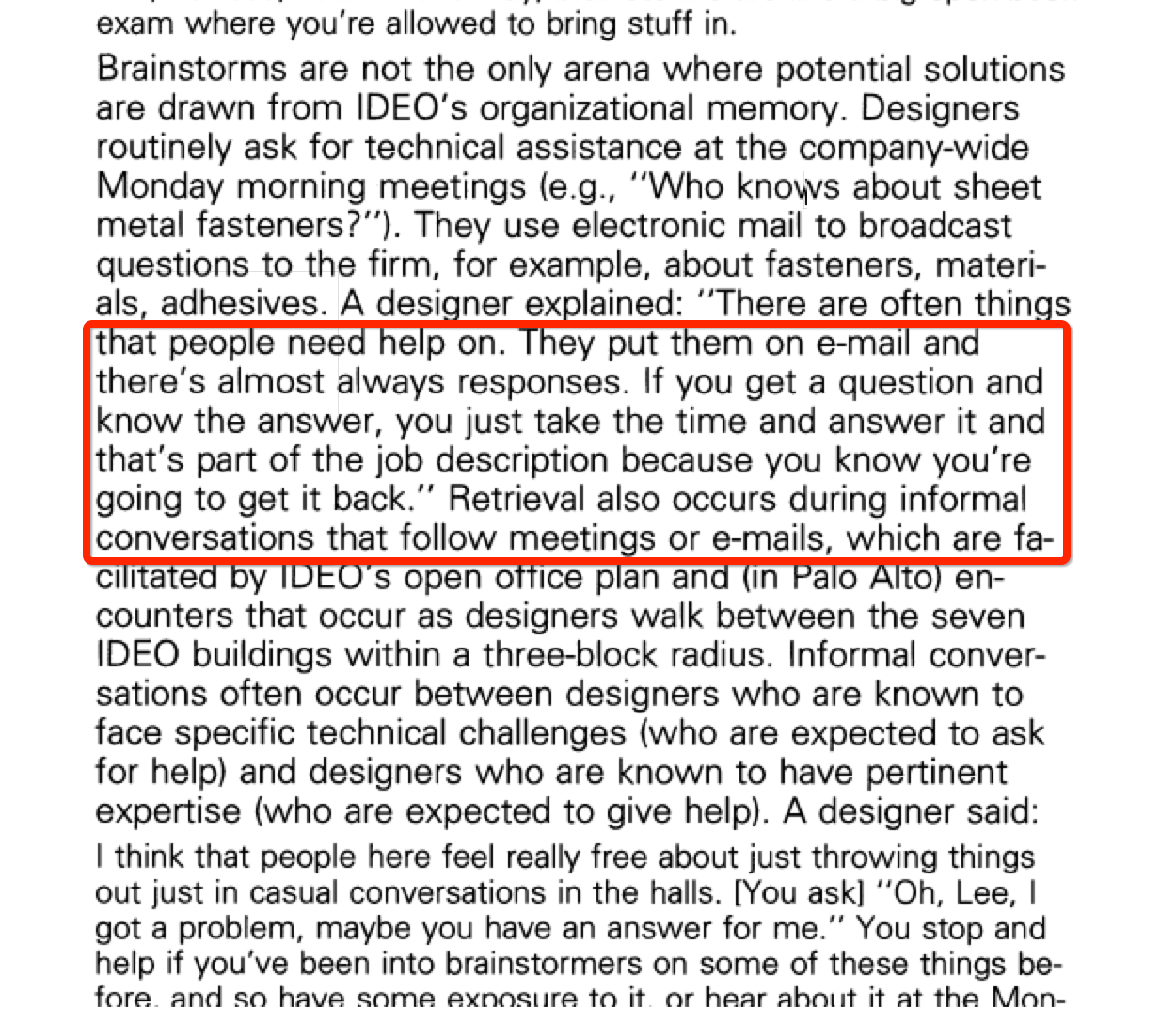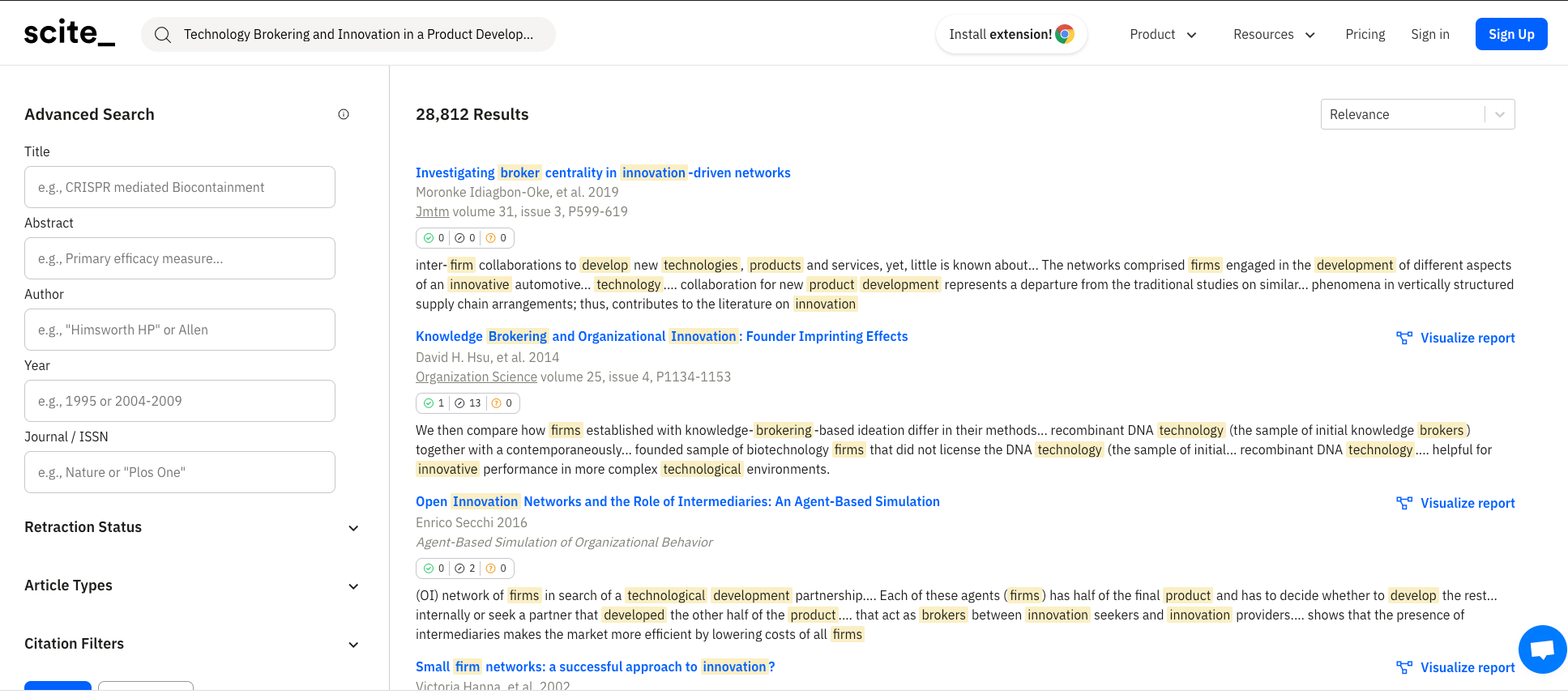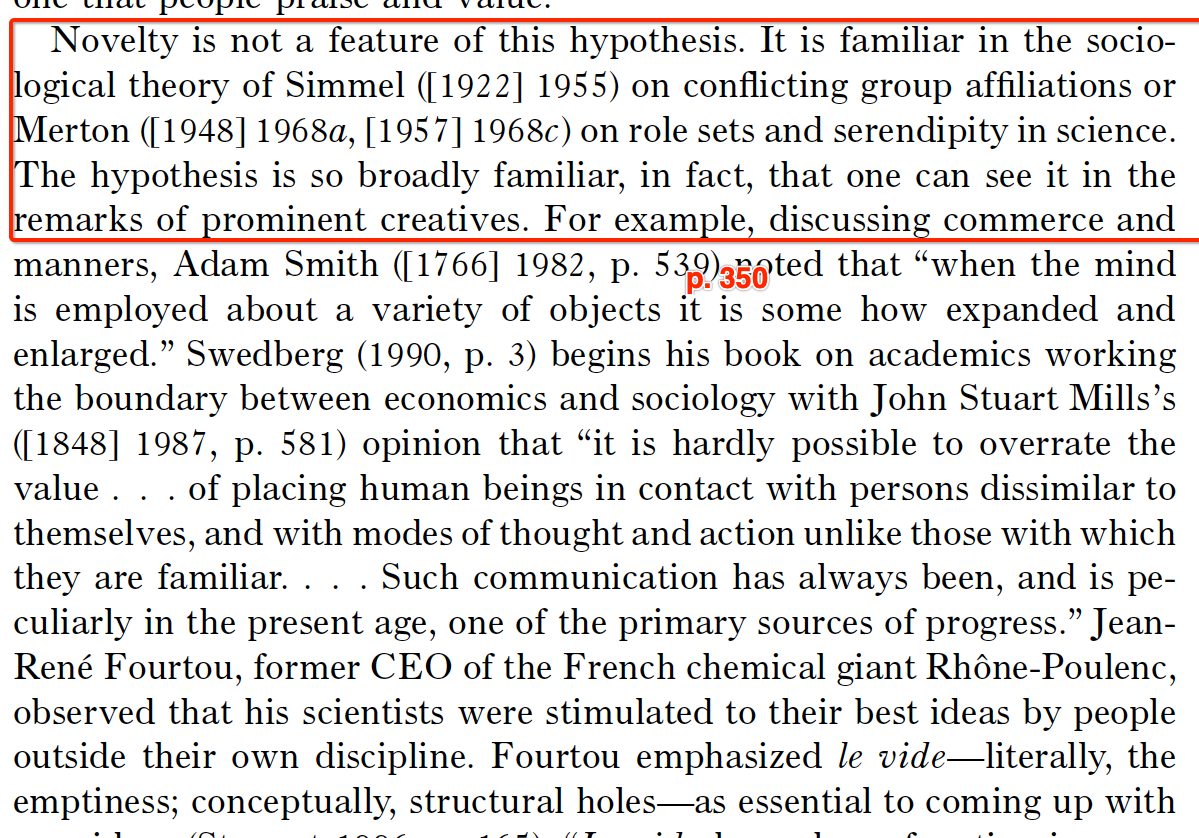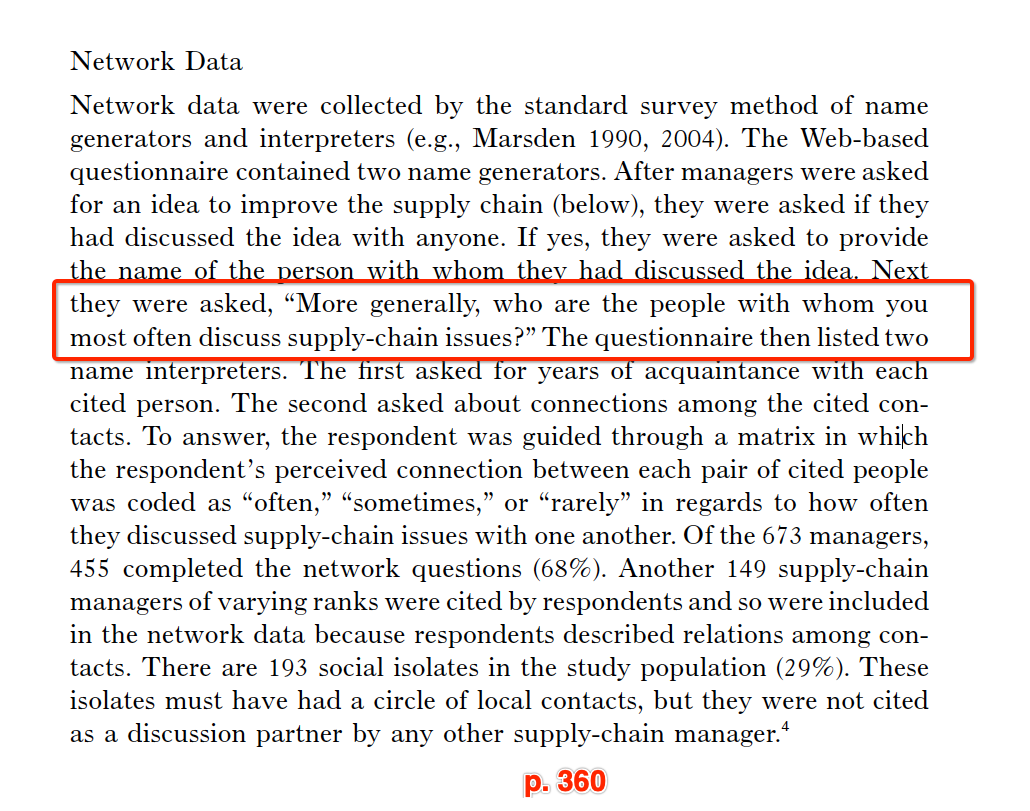What are the most efficient routes to useful cross-boundary knowledge?
Authored by:: Joel Chan
# Synthesis
- Hypothesis: we have far better evidence of people being the initial / most important first entry points into ideas across disciplinary (and other) boundaries, compared to search or recommendation that is separated from a social interaction of some kind. This is a variant of In interdisciplinary domains, network-based foraging is more powerful than search-based foraging
- We have lots of evidence of people being an effective (and in many cases the most preferred) channel to cross-boundary information
- In describing how scientists at an interdisciplinary center imported information from outside their specialty, @palmerWorkBoundariesScience2001 identified a range of practices, from talking to personal contacts, reading literature, and engaging in more formal learning activities. A strong theme was the special efficiency and effectiveness of talking to people to access and filter cross-boundary information with maximal signal-to-noise ratio.
- For example, Palmer writes, “no other type of information interaction is likely to be as efficient and profitable as interactive discussions with colleagues” (p. 33-34)
- She also summarized that scientists at the interdisciplinary research center imported information across disciplinary boundaries predominantly via personal networks (pp. 31, 32-35). For example, A device physicist at the center said that the vast majority of their information came from keeping on contact with people and going to conferences
- There is also research on sources of innovation in innovation contests and firm-/organizational-level innovation that suggests an outsider innovation phenomenon: breakthrough innovations are more likely to come from people who are technically marginal/distant from the problem domain
- For example, @jeppesenMarginalityProblemsolvingEffectiveness2010 found that Solvers who chose to submit their solutions to the 2nd stage of an innovation contest and self-rated themselves as more technically distant from the problem domain were slightly more likely to submit winning solutions for Innocentive science problem solving contests
- Additional indirect evidence comes from the literature on collocation and collaboration, which so far we can see generally seems to find facilitative effects on knowledge transfer and collaboration from induced face-to-face contact
- An entry point is @cataliniMicrogeographyDirectionInventive2017, who found substantial changes in the likelihood of collaboration across research labs as a function of collocation, particularly for labs that were “further apart” in research areas.
- This work suggests / is consistent with the idea that other channels of search across boundaries are less efficient than face-to-face (presumably “small touch”, bc collocation) contact with people from other units (i.e., across boundaries). the logic is that if the search costs were the same / comparable, then those ideas would have initiation probability that is similar to collocation, in the absence of collocation.
- Similarly, @boudreauFieldExperimentSearch2017 found that The likelihood that any given pair of scientists who were assigned to the same breakout room to discuss their work would collaborate on a pilot grant proposal was estimated to be substantially (~75%) higher ($$p(collaborate) ~= .28$$) compared to scientist pairs who were assigned to different rooms ($$p(collaborate) ~= .16$$). This estimated effect was statistically significant at p < .10.
- Note, however: this effect seems to be driven by facilitating scientist pairs who are from the same clinical area to collaborate, which suggests there might still be important inefficiencies to accessing and using cross-boundary knowledge, even when you get initial access to it through a person.
- An entry point is @cataliniMicrogeographyDirectionInventive2017, who found substantial changes in the likelihood of collaboration across research labs as a function of collocation, particularly for labs that were “further apart” in research areas.
- In describing how scientists at an interdisciplinary center imported information from outside their specialty, @palmerWorkBoundariesScience2001 identified a range of practices, from talking to personal contacts, reading literature, and engaging in more formal learning activities. A strong theme was the special efficiency and effectiveness of talking to people to access and filter cross-boundary information with maximal signal-to-noise ratio.
- We lack evidence that literature discovery tools that don’t involve tight integration with at least one person can actually help people cross knowledge boundaries
- Why might people be especially efficient access points to cross-boundary information?
- One explanation might be that Substantial portions of knowledge that is critical for innovation are not written down, and are instead “in the heads” of people.
- This is partially because Knowledge is fundamentally contextual. It is partially on this basis that CSCW research on knowledge sharing shifted from a repository model to an expertise sharing model around the mid-2000’s @ackermanSharingKnowledgeExpertise2013
- Another related explanation could be the oblique nature of analogical inspiration: rather than an idea or a phrase or picture being “the idea” that you transfer, it may be more accurate to conceptualize a stimulus, such as an analogous paper as a point/component/spark in a process of inspiration that may lead to a good idea via adapting a direct solution, but also potentially via other routes, such as sparking problem (re)formulation.
- This, combined with the previous point, may mean that encountering a paper from a different domain, no matter how relevant, may be inert in itself, if it isn’t connected to a rich process of inspiration (e.g., reformulation, query)
- One explanation might be that Substantial portions of knowledge that is critical for innovation are not written down, and are instead “in the heads” of people.
- Note that there are still some inefficiencies for the people route
- For example, @laneEngineeringSerendipityWhen reported that scientist pairs who were randomly assigned to talk to each other (and did so, face-to-face) at an interdisciplinary medical imaging symposium used about 6 new MeSH keywords from their partners in future publications when the pair had moderate overlap in intellectual interests, compared to low or high overlap (for which there were no clear effects)
- It’s notable that the observed positive effects here were for estimated less than 20% of the scientist pairs!
- And in some cases (e.g., when field similarity was high), there were dampening effects on co-authorship in the 6 years following the symposium.
- #appraisal - these results seem a bit fragile to me: they rest on interaction terms in relatively complex OLS models.
- Caveats aside, this result suggests that the likelihood that a randomly paired interaction, even within a relatively shared community of interest, and estimating effects on a relatively “lightweight” outcome (i.e., evidence of knowledge transfer, instead of more costly endpoints like copublication), is probably less than a coin flip!
- These results raises the question: What is the range of expected “benefits” of engineered interactions with potential “informants” across knowledge boundaries
- For example, @laneEngineeringSerendipityWhen reported that scientist pairs who were randomly assigned to talk to each other (and did so, face-to-face) at an interdisciplinary medical imaging symposium used about 6 new MeSH keywords from their partners in future publications when the pair had moderate overlap in intellectual interests, compared to low or high overlap (for which there were no clear effects)
# Sources
- collocation / structural holes / networks
TODO @palmerWorkBoundariesScience2001 Chapter 2
- scientists at the interdisciplinary research center imported information across disciplinary boundaries predominantly via personal networks (pp. 31, 32-35). For example, A device physicist at the center said that the vast majority of their information came from keeping on contact with people and going to conferences
@hargadonTechnologyBrokeringInnovation1997
- This paper introduces the model of technology brokering through the ethnography study of a product design company IDEO
- IDEO designers are the brokers
- (Semi-supportive claim) Upper-level managers are hub of information, quasi-librarians, informal reference systems. This applies to other employees during brainstorm sessions.
- Semi-supportive as there is no comparison with written product
 (p.737)
(p.737)
- (Semi-supportive claim) In the firm IDEO, people answer knowledge-related questions through instant written product
 (p.740)
(p.740)
- (Supportive claim) People engage in casual interaction for knowledge exchange
- (Semi-supportive claim) knowledge is stored as organizational memory (sometimes artifacts, some time the people as experts) until future design projects come up
- (Counter claim) Depending on which theory to explain observations away, for the IDEO case, information about potential solutions reside in physical artifacts, which demonstrate that organization of people, and produces exhibit “networks of juxtaposed components.”
- TODO Paper that cites @hargadonTechnologyBrokeringInnovation1997
- Scite search
- Semantic Scholar


- TODO Building Bridges and Breaking Bonds : Aspects of social capital in a regional strategic network
- J. Frick
- Business
- 2011
- {{TODO}} How Knowledge Transfer Impacts Performance: A Multi-Level Model of Benefits and Liabilities
- S. Levine, M. Prietula
- Business, Computer Science
- Organ. Sci.
- 2012
- {{TODO}} Distributed Innovation in Classes of Networks
- Y. Yoo, K. Lyytinen, R. Boland
- Computer Science
- Proceedings of the 41st Annual Hawaii International Conference on System Sciences (HICSS 2008)
- 2008
- {{TODO}} The multiple dimensions of the interfirm network: the critical sources of product innovation
- Thongchai Srivardhana
- Economics
- 2006
- {{TODO}} Collaborative Brokerage, Generative Creativity, and Creative Success
- L. Fleming, S. Mingo, D. Chen
- Sociology
- 2007
- {{TODO}} Individual roles to achieve knowledge integration in Mergers and Acquisitions: Completing the Knowledge Broker concept with Knowledge Developer’s roles
- Elvira Periac, S. Gand, Jean-Claude Sardas
- Business
- 2012
- {{TODO}} Networks, Information and Brokerage: The Diversity-Bandwidth Tradeoff
- S. Aral, Marshall W. Van Alstyne
- Computer Science
- 2010
- {{TODO}} Brokerage vs . Cohesion and Collaborative Creativity : An Evolutionary Resolution
- L. Fleming
- 2005
- {{TODO}} Knowledge Brokering: Spanning Technological and Network Boundaries
- Carsten Bergenholtz
- Business
- 2011
- {{TODO}} Nexus Work: Brokerage on Creative Projects
- Elizabeth Long Lingo, Siobhan O’Mahony
- Economics
- 2010
- {{TODO}} The Antecedents and Innovation Consequences of Organizational Knowledge Brokering Capability
- {{TODO}} Knowledge Brokering and Organizational Innovation: Founder Imprinting Effects
- {{TODO}} The Impact of Social Capital on Innovation Intermediaries
- S. Munkongsujarit
- Business
- 2013
- {{TODO}} Bridges, brokers and boundary spanners in collaborative networks: a systematic review
- J. Long, F. Cunningham, J. Braithwaite
- Medicine
- BMC Health Services Research
- 2013
- {{TODO}} The impact of intermediaries on innovation performance at small- and medium-sized enterprises in the Yangtze River Delta
- {{TODO}} Technology intermediaries and regional innovation performance: an empirical study in China
- J. Wu, Mengzhou Xu
- Business
- 2013
- Scite search
- This paper introduces the model of technology brokering through the ethnography study of a product design company IDEO
This paper proposes that people who connect across groups, the structural holes, are more familiar with alternative ways to think and behave, therefore express valuable ideas.
- From observations of manager networks in a American electronic firm
- This theory has predecessors, (also noted in the @hargadonTechnologyBrokeringInnovation1997 paper),
- The sociological theory of Simmel
- Social capital (which the structural holes are)
- The sociological theory of Simmel
(Scaffolding claim which is not directly supporting) A network diagram shows information flow. The text is saying information flow is more routine or more clear between people who connects more (than those who connects less?)
(Scaffolding claim that reveals an issue) This paper compares people who are structural holes vs. those who are not. Expect to have some comparisons on structural holes vs. written products (if they later states that supply-chain issues are also documented but not referenced as more frequent than talking to people)
TODO Paper that cites @burtStructuralHolesGood2004
- From Scite
- Minor system issue









- For this: not sure it is supporting
- Minor system issue
- From Semantic Scholar

- {{TODO}} Dynamic Capabilities of SMEs: The Contributions of Bricolage and Social Capital
- {{TODO}} Knowledge Specialization, Knowledge Brokerage and the Uneven Growth of Technology Domains
- Gianluca Carnabuci, Gianluca Jeroen Bruggeman
- Economics, Biology
- 2009
- {{TODO}} Social networks, individual orientations, and employee innovation outcomes: A multi-theoretical perspective
- Travis J. Grosser
- Political Science
- 2013
- {{TODO}} The Role Of Social Ties In Fostering Innovation
- M. M. Salaran, A. Maritz
- Sociology
- 2013
- From Scite
DONE @laneEngineeringSerendipityWhen
- scientist pairs who were randomly assigned to talk to each other (and did so, face-to-face) at an interdisciplinary medical imaging symposium used about 6 new MeSH keywords from their partners in future publications when the pair had moderate overlap in intellectual interests, compared to low or high overlap (for which there were no clear effects)
- outsider innovation
- TODO @cattaniDeconstructingOutsiderPuzzle2017
- @frankeIntegratingProblemSolvers2014
- DONE @jeppesenMarginalityProblemsolvingEffectiveness2010
- Solvers who chose to submit their solutions to the 2nd stage of an innovation contest and self-rated themselves as more technically distant from the problem domain were slightly more likely to submit winning solutions for Innocentive science problem solving contests
- search / literature-based discovery
- recommender systems
- DONE @packerImportanceSDICurrent1979
- SDI use was associated with a significant reduction in efficiency of keeping up to date with the literature for scholars in self-reported low-Scatter fields; in contrast, SDI use was not associated with efficiency for high-scatter scholars (although there was a numeric trend in a positive direction)
- @beelResearchpaperRecommenderSystems2016
- DONE @packerImportanceSDICurrent1979
- interdisciplinarity / domain analysis











